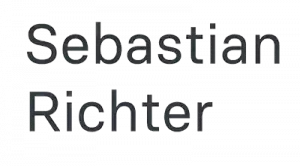Hi, I am Felix,
head of lecker-brand.com
– we do graphic- and webdesign.
Past –– Present
1999 my first "<html>" appeared in a simple texteditor.
2008 at the Academy of Art and Design in Halle, I started developing my digital portfolio, which quickly acquired attention from others in need of design, photography, and branding services.
2022, me and a group of developers started working for a diverse range of clients, including companies, fashion labels, artists, doctors, and startups.
Let's build dynamic tools to inform and connect people.





Basic Tools:
Pen, paper, brain & coffee. HTML, CSS, JavaScript, Wordpress, Bootstrap, LiveCanvas, Gsap, Sublime, AdobeCS.
?
- Strategy
- Milestones
- Iterations
- Launch
- Evaluation
We decide what we want to achieve, for example: setting up an online store, editorial photography, a landing page or a new corporate identity.
We break it down into tasks we can do within a certain time.
After that, we get started. Along the way, we constantly review our progress, making adjustments whenever necessary.
Everything looks good? – we launch.
Lastly, we think about what might come up in the future and how we can progress.
People take pride in DIY. But how many people walk around in homemade shoes?
Certain details simply require knowledge and experience. There are many page builder available, but often the learning curve steepens as the project becomes more complex. Design issues, appropriate handling of content, finding a form that appeals to the target audience, or working with graphic programs are only rudimentarily covered.
Large Language Models are very helpful – without the right prompts and, above all, without an understanding of what the algorithm should produce, it becomes difficult to decide how useful or correct an answer ultimately is. Currently, generated content and code still requires a strict second view to decide which results can be used.
The speed at which a page loads. The accessibility of a site – a topic that has even become legally required in many countries. Certain aspects of SearchEngineOptimization.
However, the quality of a website is also determined by how closely the individual design matches the identity of the people behind the website.
Last but not least, is it aligning with the audience, is it useful?
Vision, identity & structured information.
My ability to express reasonable aesthetic decisions and to execute them.
Yes. I call it longterm based trusted advice.
On top I am in constant exchange with the developers of the software I am working with.
Are crucial for both clients and designers, ensuring a mutual understanding of timing and expectations.
If challenges arise, both parties commit to informing each other promptly, fostering cooperation and ensuring project success.